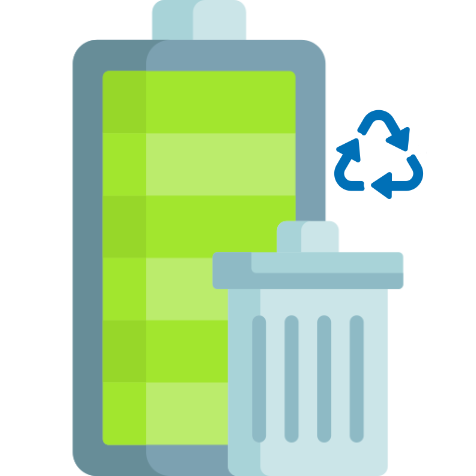EPR Registration for Tyre Waste
India stands at the second position globally regarding waste tire generation. In 2022, the tire waste generation stood at 15 lakh tonnes. Most tire waste ends up in open landfills, causing irreversible damage to human health and the environment. Legislation like Hazardous and Other Waste (Management and Transboundary Movement) Rules 2016 was enacted by the Indian government to provide such waste better.
The same legislation also talks about the concept of EPR, which stands for Extended Producer Responsibility, for manufacturers and other allied entities. EPR registration is now mandatory, and it seeks producers to follow a transparent and tangible approach to curtail waste tire generation.
EPR registration for tire waste falls under the Hazardous and Other Waste (Management and Transboundary Movement) Rules 2016. The CPCB grants EPR approval against the prescribed application and relevant paperwork. Let’s dig into the legalities and compliance of EPR registration for Tyre Waste.
Why does EPR matter for tire waste?
As discussed earlier, EPR for Tyre Waste is all about the onus of the tire manufacturer to effectively handle the waste tire generated within the premises. The goal is to minimize the harmful impact of waste tires on the environment and human life. In general, EPR considers environmental, social, and economic factors and incentivizes manufacturers to elevate waste management endeavors.
Also, manufacturers must categorize/segregate tire waste based on their conditions. For example- the tire waste that can be used for reuse or repurposing must be segregated separately from the lot of tires that are futile. These actions should be part of waste management and, hence, be documented as part of compliance.
EPR is a much broader concept, and therefore, it is not merely confined to premises-based waste management. It seeks to augment the practice of effective waste management across the industry to make a significant difference.
In a nutshell, EPR regulates the way tire waste is managed, recycled, repurposed, and disposed of.
Accountability of Producers and Recyclers under EPR Registration
EPR registration is mandatory for both manufacturers and recyclers. Legally, the manufacturer refers to a producer or importer of brand-new tires used for automotive purposes. Meanwhile, the recyclers are the ones that recycle the useless tires into productive items such as pyrolysis oil, crumbed rubber, carbon black, char (used as a raw material for new tires), etc.
The legislation requires manufacturers to document the entire life cycle of the waste tires, which includes:
- Amount of tire waste generated per day (metric tonnes)
- Amount of tire waste transported to recyclers
- Amount of tire waste channelized to disposing facility
- Amount of tire waste recycled within the premises
Apart from this, the manufacturers are required to file the quarterly returns in the prescribed form, reflecting the amount of waste handled within or outside the facility. It serves as tangible proof that the licensee abides by the authority’s directions and targets concerning waste management. The same applies to the recycler of tire wastes and anyone who falls under the scope of EPR.
Manufacturers lacking an in-house recycling facility can team up with certified third-party recyclers only. Failing to abide by such a condition can lead to severe penalties. Furthermore, disposal of waste tires should be done by a certified disposal facility recognized by the pollution board.
Wastes handling Target (EPR obligations) for Manufacturers and Recyclers
The CPCB, given the new amendment, has penned down the waste handling target, which tends to increase every year. Entities having EPR registration for Tyre Waste must abide by these targets. Here’s what these targets look like:
- For the year 2022-23, the waste handling target should be equivalent to 35% of the amount of tires imported or manufactured in the preceding FY.
- Similarly, for the year 2023-24, the target threshold becomes 70% of the preceding FY production or importation.
- For the year 2024-25, the target threshold would become 100% of the preceding FY production or importation.
Documents concerning EPR registration for Tyre Waste
- Facility registration
- Factory license
- Trademark registration, if available
- GST and PAN of the Facility
- Applicant’s identity and address proof
- Tyre waste quantity
- Import Export code (only for tire importers)
- EPR Plan reflecting how waste management undergoes and what target shall be achieved
- List of certified facilities with whom the facility signed an agreement for waste handling.
- Statement concerning ROHS
- Letter of understanding with TSDFs (recyclers, dismantlers, storage facilities, disposal units)
Process of securing EPR Registration for Tyre Waste
Below is the detailed process that will help secure EPR registration for Tyre Waste seamlessly and efficiently:
Step 1: Online Application Filing
Head to the respective SPCB portal and get access to Form 1 (application for EPR registration for tire waste). Fill out the form with legitimate details concerning applicant information, facility info, waste collection target, standard being followed, target achieved, production capacity, etc.
Step 2: Upload the documents and pay the fee
The next step will be document uploading. Make sure documents are in order and format as advised by the portal. Uploading paperwork other than the recommended file format can lead to technical issues and would be time-consuming. Once done, head to the payment gateway to submit the fee.
Step 3: Inspection
Post receiving the required paperwork, the CPCB shall initiate the inspection process, which will involve document checking and on-site vetting. During the premises visit, the CPCB officials shall thoroughly vet the facility for any potential non-compliance.
Step 4: Grant of Certificate
If the authority fails to identify any non-compliance iregardingpaperwork or the facility, they will grant the EPR certificate for tire waste. The licensee, after securing the approval, is required to abide by the authority’s direction, whether it is a matter of documenting key processes or filing returns.
Join hands with Adviso and Say Goodbye to Convulated Licensing norms
Every aspiring entrepreneur wants to emphasize things that drive growth and value. Unfortunately, most of them fail to ensure that owing to the never-ending compliances and complicated registration process. That is where Adviso steps in! With Adviso, you can handle licensing requirements like a breeze while focusing on things that truly matter to you.
Why us?
- Fosters a formidable presence in the licensing realm
- Prioritize client’s needs above all and deliver services that matter
- Ensure prompt grant of approval or registration no matter how complicated norms are
- 100% success rate in securing certification in one go
- Possesses the unmatched ability to simplify certification compliances for clients
- Have unmatched acumen in registration compliances.
Frequently Asked Questions about EPR registration for Tyre waste
EPR stands for Extended Producer Responsibility. It is a concept introduced by GOI in association with CPCB to curb waste generation from tires more effectively.











